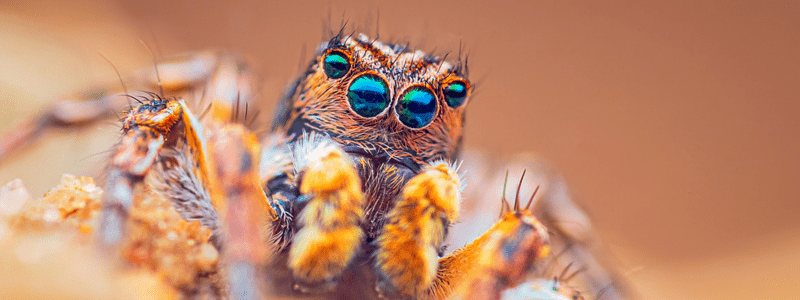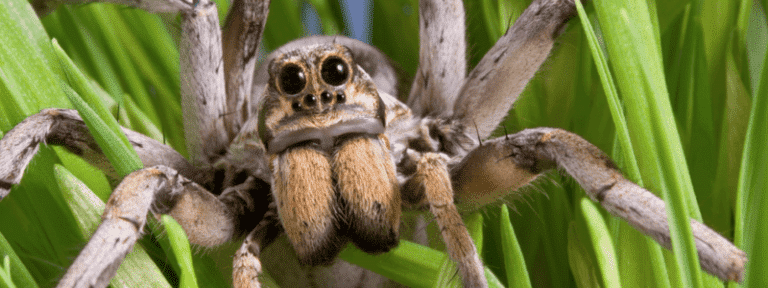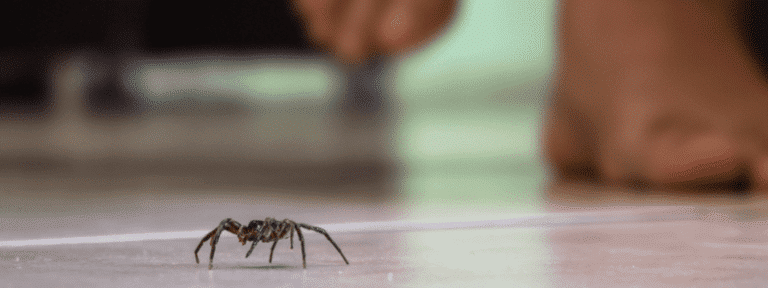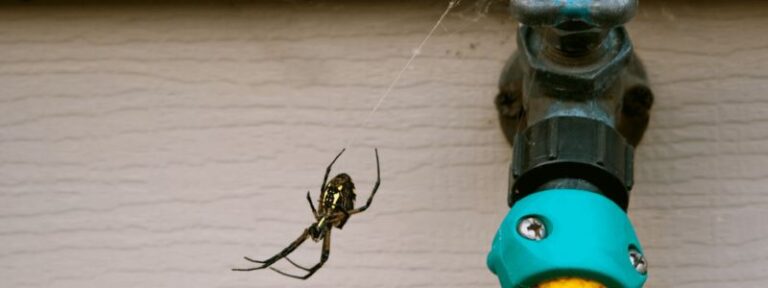In this blog, we’ll focus on the jumping spider, whether it has poisonous properties, and its qualities, including:
- What do jumping spiders look like?
- Are jumping spiders poisonous?
- What species of jumping spiders are there?
- What happens if a jumping spider bites you?
- Signs of jumping spiders in your home
- How to prevent jumping spiders
What do Jumping Spiders Look Like?
Jumping spiders have compact bodies with shorter legs. While they tend to be black, jumping spiders can be brown or gray with bright coloration markings. These markings can come in gray, yellow, red, blue, green, or white spots as well as stripes.
Adults have a body length of ⅛ to ¾ of an inch (or 4 to 18 mm). Jumping spiders’ front legs are usually thicker than their other legs, with their bodies covered in dense hairs or scales brightly colored and glossy.
Are Jumping Spiders Poisonous?

No, jumping spiders are not poisonous. Despite their less-than-appealing appearance, jumping spiders are not dangerous to humans. That said, they do have fangs capable of producing venom.
Some individuals may have allergic reactions to a jumping spider bite, causing dizziness, nausea, or vomiting. In these cases, it’s important to contact a doctor for medical assistance.
What Species of Jumping Spiders Are There?
As of 2019, there are more than 6,000 reported species of jumping spiders. While it would take too long to name each jumping spider species in this blog, several are common in North America.
The Phidippus Audax (Bold Jumping Spider) is the most common species of jumping spider in the U.S. They’re relatively small and typically found in gardens or around the home.
Other common species of jumping spiders include:
- Habronattus (Paradise Spider)
- Phidippus
- Salticus (Zebra Spider)
- Sarinda
- Peckhamia
- Marpissa
What Happens if a Jumping Spider Bites You?
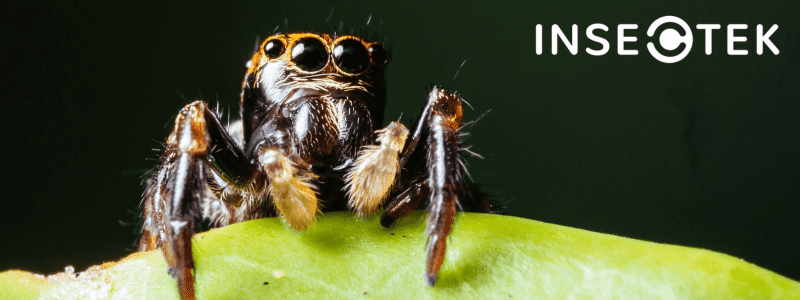
Jumping spiders are not aggressive; they’ll only bite if they sense danger or feel threatened. If a jumping spider does bite you, it can cause mild pain, itching, and swelling at most due to the venom in its fangs.
Their bite resembles a mosquito bite and, due to their size, is likely not to puncture the skin. If the bite punctures the skin, it will likely hurt no more than a bee sting. Due to their mild nature, jumping spider bites resolve on their own within a few hours and don’t require any serious medical attention.
Signs of Jumping Spiders in Your Home
Even though these spiders pose little harm to humans, they can still become pests when they populate your home. Because jumping spiders don’t spin webs or cause damage to the house, the only genuine way to tell if they’re in your home is by actually seeing them.
Finding one or multiple can indicate a jumping spider infestation. Thankfully, jumping spiders prefer the outdoors and vegetation, so they’re unlikely to infest a house.
How to Prevent Jumping Spiders
Jumping spiders will rarely make their way into your home deliberately. Often, they’re brought inside accidentally on potted plants or other outdoor objects. Other times, they may unintentionally wander into your home through an open window or door.
Because the jumping spider diet consists of smaller insects, other present infestations may entice them into your home.
Besides these few situations, jumping spiders will have little to no interest in coming into your home. If jumping spiders do infest your home, professional pest control is an easy and quick solution.



